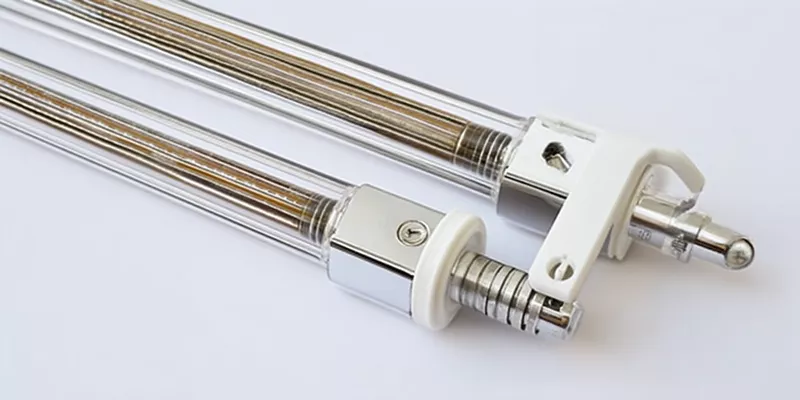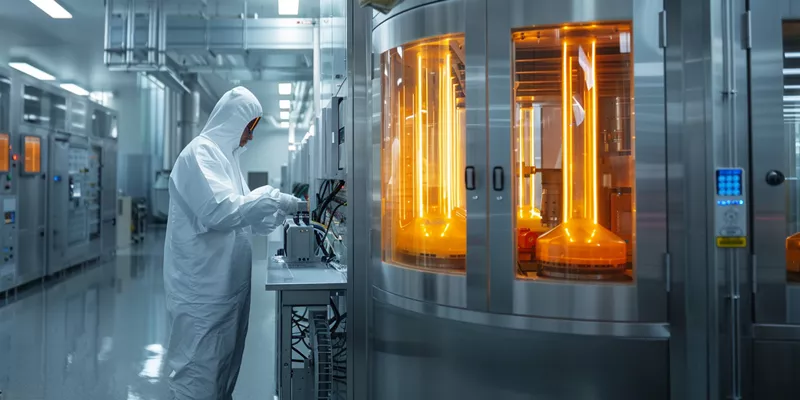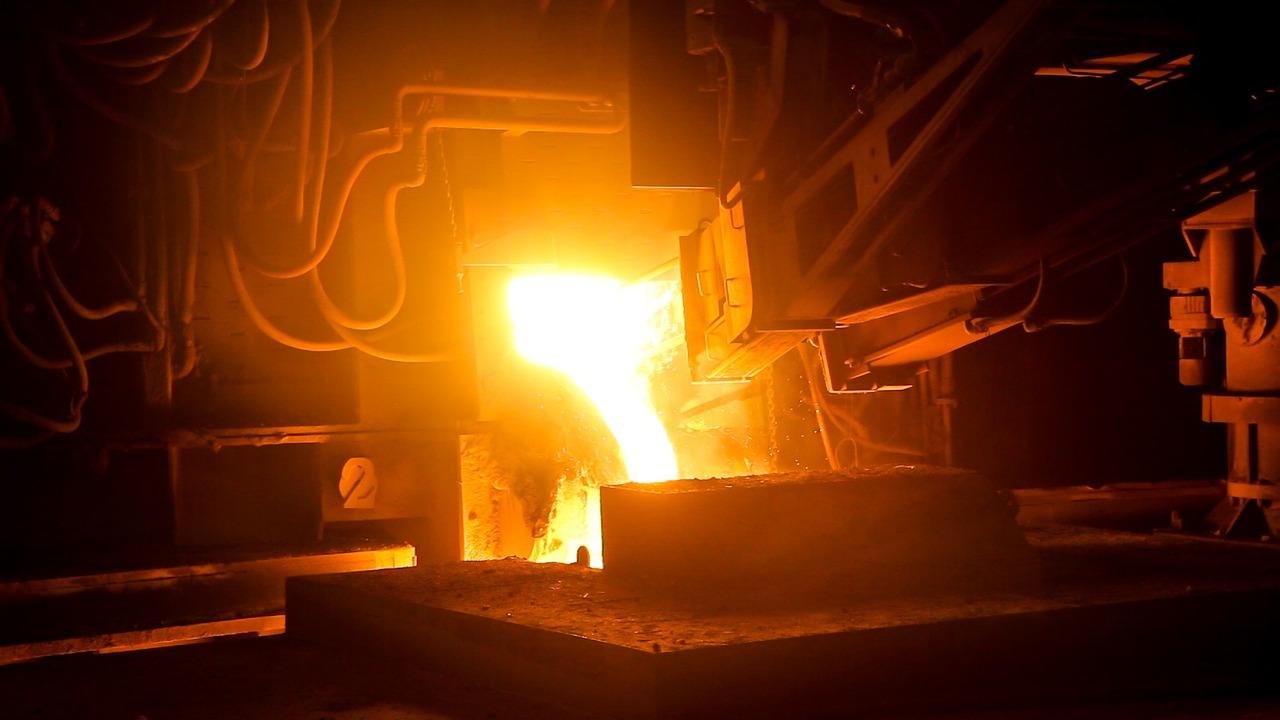Engineers in high-temperature and optical fields need materials that deliver both stability and precision.
Fused silica rods offer exceptional thermal reliability and optical clarity, making them essential for semiconductor, furnace, and laser applications where minimal distortion and high purity are critical.

This guide provides actionable insights on the properties, applications, and procurement of fused silica rods for advanced engineering systems in 2025.
What is Fused Silica Rod and Why is it Essential for Precision Engineering?
Fused silica rod is a high-purity, synthetic amorphous silica material. It is produced by melting high-grade silica in a controlled environment, resulting in ultra-low impurity content and exceptional homogeneity.
Its unique combination of near-zero thermal expansion, high chemical resistance, and outstanding optical transmission makes it indispensable for precision engineering. Fused silica rods maintain their shape and clarity even under extreme thermal and mechanical stress.
Engineers rely on fused silica rods for critical components in semiconductor, optical, and analytical systems where performance and reliability cannot be compromised.
Thermal and Optical Properties of Fused Silica Rod
Fused silica rod exhibits exceptional thermal stability with near-zero thermal expansion coefficients, ensuring reliability in high-temperature environments like semiconductor processing.
Its optical properties include superior UV transmission and minimal distortion, critical for precision applications in laser systems and imaging technologies.
Engineers leverage these combined attributes to achieve optimal performance in demanding industrial scenarios.
Key Thermal Properties of Fused Silica Rod for High-Temperature Reliability
Fused silica rods are engineered for environments where thermal stability and resistance to rapid temperature changes are essential.
Their low thermal expansion and high softening point enable reliable operation at temperatures up to 1600°C.
Fused silica rods exhibit a thermal expansion coefficient of 5.5×10⁻⁷/°C1, which is among the lowest of all engineering materials. This ensures dimensional stability even during rapid heating and cooling cycles.
At 1600°C, fused silica rods maintain less than 0.001% dimensional change, preventing misalignment and mechanical failure. This property is critical for semiconductor furnaces and high-precision reactors.
Engineers should always request ASTM E228-2025 test data to verify thermal expansion performance for their specific application.
Optical Performance Characteristics of Fused Silica Rod in Laser and Imaging Systems
Optical-grade fused silica rods are valued for their high transmission across UV, visible, and NIR wavelengths. Their purity and surface quality directly impact system efficiency and measurement accuracy.
Fused silica rods transmit more than 90% of UV light in the 190–250 nm range, making them ideal for laser optics and UV lithography2. Low hydroxyl content further enhances deep UV transmission.
Surface finish is equally important—roughness below 5 nm RMS is required for laser systems to prevent up to 15% signal loss. Always specify and validate surface quality using ASTM F1094 standards.
Engineers should request spectral transmission data and surface finish certificates from suppliers to ensure compatibility with high-precision optical applications.
Applications of Fused Silica Rod in Semiconductor Processing and High-Temperature Furnaces
Fused silica rods are widely used in semiconductor manufacturing and high-temperature furnace systems due to their purity and thermal stability.
In semiconductor processing, they serve as wafer supports, thermocouple sheaths, and reaction chamber components. Their resistance to contamination ensures high device yield and process reliability.
In high-temperature furnaces, fused silica rods are used as observation ports, support beams, and sample holders. Their ability to withstand rapid thermal cycling reduces maintenance and downtime.
Engineers should select rods with appropriate diameter, wall thickness, and purity for each application scenario.
Applications of Fused Silica Rod in Optical Components and UV Lithography
Optical and photonic systems demand materials with high transmission and minimal autofluorescence. Fused silica rods meet these requirements for a range of advanced applications.
In UV lithography, fused silica rods are used as light guides and alignment pins. Their high UV transmission and dimensional stability support precise patterning and exposure.
In analytical and imaging systems, rods serve as sample holders, optical windows, and calibration standards. Their purity and surface finish ensure accurate measurements and reproducibility.
Expert Insight:
A common oversight is underestimating the impact of surface quality on optical transmission—roughness below 5 nm RMS is essential for laser systems to prevent up to 15% signal loss. Always specify surface finish and validate with ASTM F1094 standards during procurement to avoid failures in high-precision optical applications.
How to Select the Right Grade of Fused Silica Rod for Specific Thermal and Optical Needs
Selecting the optimal fused silica rod grade requires matching material properties to the demands of your application.
Engineers should consider purity, hydroxyl content, diameter, and surface finish when specifying rods for thermal or optical use.
- For high-temperature applications, choose rods with low hydroxyl content (<5ppm) and verify thermal expansion data.
- For optical systems, prioritize high-purity, low-roughness rods with certified UV transmission.
- Always request batch-specific certificates and test reports from suppliers.
Cost Factors and Pricing Analysis for Fused Silica Rod Procurement in Engineering Projects
Cost drivers for fused silica rods include diameter, purity, surface finish, and order quantity. Tighter tolerances and higher purity grades increase manufacturing complexity and price.
Standard diameters (3–50mm) are more economical, while custom sizes or ultra-thin rods may require premium pricing. Minimum order quantities (MOQs) can impact R&D budgets—negotiate for small prototype batches when possible.
Lead times for custom rods typically range from 4–6 weeks. Plan ahead for urgent projects and confirm all specifications before placing orders.
Conclusion
Fused silica rods deliver unmatched stability and purity for high-temperature and optical engineering systems. Careful selection, specification, and supplier validation ensure reliable performance and cost control.
Achieving precision with fused silica rods is a strategic engineering challenge. Leverage TOQUARTZ’s direct factory supply, engineering support, and rapid delivery to ensure your system meets the highest standards—contact us for expert consultation and custom solutions.
FAQ (Frequently Asked Questions)
What is the maximum continuous operating temperature for fused silica rods?
Fused silica rods can operate continuously at up to 1600°C, with minimal dimensional change.
How do I specify and verify surface quality for optical applications?
Request surface roughness below 5 nm RMS and validate with ASTM F1094 test data. Supplier certificates should confirm compliance.
What are the key cost factors when procuring fused silica rods?
Diameter, purity, surface finish, and order quantity are primary cost drivers. Custom sizes and tight tolerances increase price.
How does fused silica compare to quartz glass or ceramics for high-temperature use?
Fused silica offers lower thermal expansion, higher purity, and better UV transmission than quartz glass or ceramics, making it ideal for demanding applications.
References:





